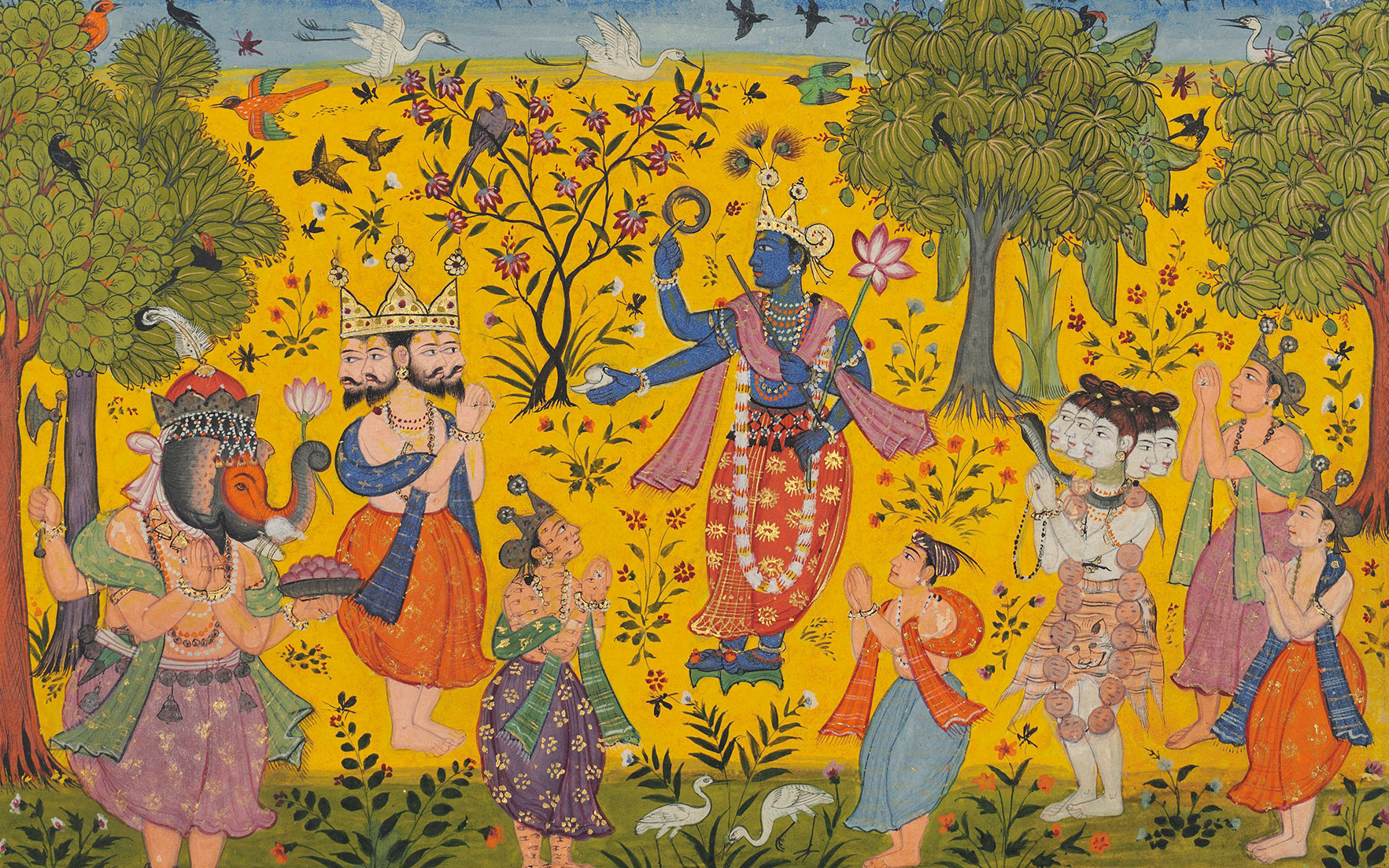INDIAN ART HISTORY
India bleeds of creativity! From dance.music,movies,to Art ,our country is rich in cultural heritage and home to numerous forms of art.
Indian art is a concise term encompassing a broad range, both in terms of medium, timescale and geography. It covers an immense variety of forms, including pottery and sculpture, jewellery, cave paintings, and textiles. It also describes artworks originating in geographical areas that we know today as India, Pakistan and Bangladesh. Indian art history reflects this diversity.
Indian art has ancient traditions leading back thousands of years, evolving over the centuries to reflect the beliefs and culture of each period of this diverse nation’s history. India’s prominence as a trading power has brought it into close contact with many influences, all of which have played their part in shaping and enriching a vibrant artistic heritage.
The origin of Indian art can be traced to pre-historic Hominid settlements in the 3rd millennium BC. On its way to modern times, Indian art has had cultural influences, as well as religious influences such as Hinduism, Buddhism, Jainism and Islam. In spite of this complex mixture of religious traditions, generally, the prevailing artistic style from Indian paintings to metallurgy, stone sculpture, and religious text,at any time and place has been shared by the major religious groups.
TYPES OF INDIAN ART
The variety and richness of Indian art is breathtaking. The numerous Indian paintings, buildings, and artefacts that make up this wonderful tradition demonstrate the remarkable skill of generations of craftsmen, and provide an insight into ancient cultures and beliefs.
CAVE PAINTINGS
The earliest forms of Indian art date from the rock paintings of the prehistoric period. Some of these can be seen today, for example in the Buddhist frescoes found in the cave temples at Ajanta, which date from the 1st to the 7th century AD.
These Indian paintings reflect a naturalist style and provide a fascinating insight into the world of the ancient peoples who used to inhabit the caves. They mark the beginning of a tradition of wall painting that lasted into the 19th century. The most common subjects in cave paintings are large wild animals,
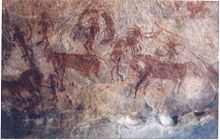
such as bison, horses, aurochs, and deer, and tracings of human hands as well as abstract patterns, called finger flutings. The species found most often were suitable for hunting by humans, but were not necessarily the actual typical prey found in associated deposits of bones; for example, the painters of Lascaux have mainly left reindeer bones, but this species does not appear at all in the cave paintings, where equine species are the most common. Drawings of humans were rare and are usually schematic as opposed to the more detailed and naturalistic images of animal subjects.
STONE SCULPTURES
Indian art is particularly notable for its sculpture, of which the earliest known examples date from the Indus Valley civilisation (5000–1500 BC). Unlike many other civilisations, there is no large-scale public art from this period, and the objects from this time are small in scale. At the end of this civilisation, there is not much evidence of any significant art until the Buddhist period from around 1500 CE.
During the Buddhist period, devotional sculpture emerged as a major genre, and many examples of this can be seen in museums around the world as well as in its original locations. A recurring theme is life-sized and giant carvings of the Buddha figure, and this motif later influenced Jain and Hindu art.From the temple decorations of Khajurahoe to the many Buddhist figurines, the styles have varied greatly throughout history but they’ve been an integral part of artistic expression throughout the subcontinent.
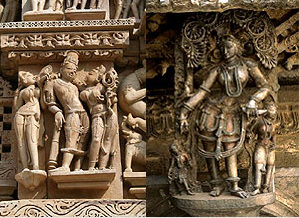
METAL CASTING
Casting images in metal is one of the oldest kinds of Indian art. The earliest known artefact is around 4,500 years old. This exquisite figurine of a dancing girl was found at Mohenjodaro and is a fine example of the exceptional level of skill with which the earliest metal workers pursued their craft.
Bronze, iron, copper and silver were all used to produce items such as sculptures of deities, animals, and mythological creatures. The craftsmen of the Chola dynasties from 300 to 200 BC were particularly renowned for their bronze figurines.
The Pallava artists continued this tradition from the 6th to 10th centuries AD. The bronze Avalokitaswara on display at the Victoria and Albert Museum is one of the finest pieces from this period.
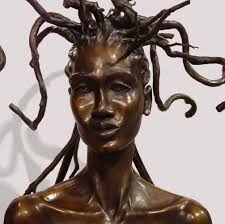
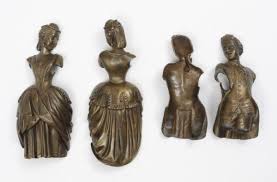
RELIGIOUS MANUSCRIPTS
Miniaturist painters first appeared around 1000 AD, with their illustrated religious Buddhist and Jain manuscripts. These were initially painted on palm leaves but the emergence of paper in the 14th century enabled different styles to develop in the miniature format. The miniature form of painting continued to flourish in the major art schools of Rajasthan and Pahari.
The miniature form of painting continued to flourish in the major art schools of Rajasthan and Pahari.
The study, recitation and veneration of sacred scriptures are a primary religious focus of the Jains. Important sermons, canonical texts and commentaries were transmitted orally long before being committed to writing. Exactly when Jain texts began to be illustrated is uncertain; the oldest surviving examples date from around the 10th-11th century, but many state that they were copied from earlier texts that presumably were decaying.
The earliest Jain illuminated manuscripts are inscribed and painted on prepared palm-leaves and bound with cords passing through holes in the folios. The folios are encased in wooden covers that are often decorated with religious or historical themes. Book covers continued to be made in later centuries.
After the introduction of paper into western India from Iran around the 12th century, Jain texts were increasingly written on this new and more versatile medium. The use of paper permitted larger compositions and a greater variety of decorative devices and borders, although the format of the palm-leaf manuscript was retained. By the end of the 14th century, deluxe manuscripts were produced on paper, brilliantly adorned with gold, silver, crimson and a rich ultramarine derived from imported lapis lazuli.
NEW INFLUENCES: THE MUGHAL ART
The period from the late 15th to early 16th centuries saw a dramatic change in artistic style. During this time, Northern India was ruled by the Muslim Sultans, many of whom actively encouraged new developments in painting. This reached its apogee during the Mughal Empire when as many as 30 Persian painters were brought to court at one time. These artists developed a unique style from the very beginning, rendering Indian motifs such as local plants and animals in their characteristically Persian style.Religious parables,folklore,scenes from daily life and erotica were popular.The Mughals, perhaps more than any other Islamic dynasty, made their love of the arts, their aesthetic principles, a central part of their identity as rulers.Mughal painters depicted events from the emperor’s life, military expeditions, festivals, hunts, polo playing, and animal combats. Also, portraits of emperors or the emperor and his family were common, something rarely seen in Iranian painting. Court artists also depicted Indian legends, Christian subjects, and Westerners. Court painting was a workshop effort. More than one artist worked on a project—some specialized in borders, some applied gold leaf, some painted vegetal patterns, etc.
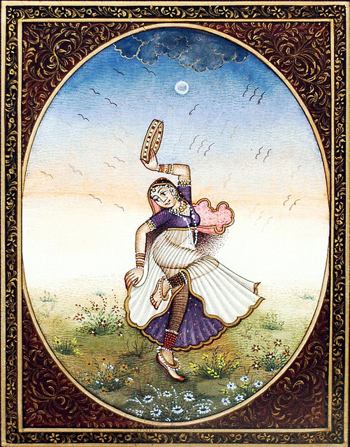
Miniature paintings with intricate details and acute expressions originated in the Mughal Era ,around 16th century and are influenced by Persian styles, and flourished under Shah Jahan and Akbar’s rule. Later, it was adopted by Rajputs, and is now popularly practiced in Rajasthan. As with other art forms, the paintings depict religious symbols and epics. These paintings stand out as humans are portrayed with large eyes, a pointed nose and a slim waist, and men are always seen with a turban.The bright and pure colouring of the Persian miniature is one of its most striking features. Normally all the pigments used are mineral-based ones which keep their bright colours very well if kept in proper conditions, the main exception being silver, mostly used to depict water, which will oxidize to a rough-edged black over time.
MODERN INDIAN ART
The British Colonial era and beyond proved especially fertile for Indian art. The period after 1858, when India was under administration by the British Raj, saw established Indian artistic traditions becoming integrated with European ones. Modern Indian art is in the midst of an unprecedented golden era, accompanied by increasingly reflective commentary from contemporary art historians.
During last decade when India was making strides and became confident of its bright future , Indian art was making a silent statement across the globe. Over the years , Indian art has seen transition periods – ancient art of temple and sculptures , art by darbar artists in courts of kings , Mughal and British periods and post independence period . It has grown without giving up its own uniqueness and the same time striking a cord at the international level. Artists by and large are now expressing concerns and aspirations of the nation as a whole in their own styles.

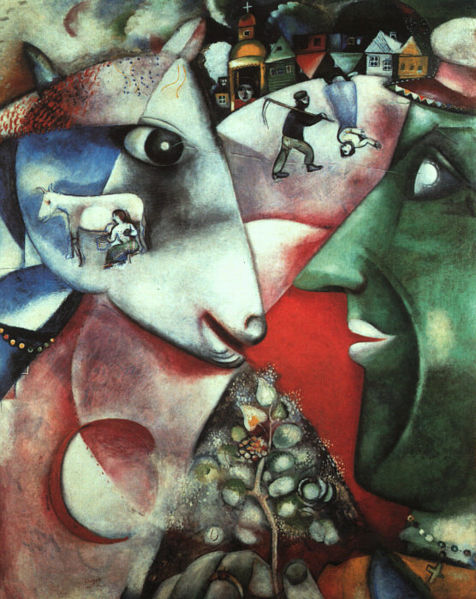
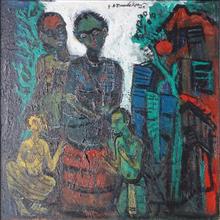
Contemporary Indian art shows rare kind of maturity and high degree of sophistication. It is showing readiness to imbibe global trends without fear of losing its inherent strength and willing to experiment. Indian artist is also no more confined to one single medium of oil on canvas or water colour on paper , but is neither afraid nor against using all or mix of available mediums. If one takes a close look at contemporary Indian art , one will not find any distinction between paintings, assemblages, installations, collages and sculptures as Indian artists with new level of energy is exploring all available mediums. As a result of globalization of world economy during last decade, support base for Indian art has also got transformed. Apart from supporting business houses, government agencies, and royal rich families, discerning Indian middle class which also benefited from economic growth has been supporting Indian art in a big way. This new found love for art has given immense sense of identity and pride to globe trotting professional Indians during first decade of the 21st century. We can hope that Indian art will be more at ease in experimenting and breaking new grounds in coming years.
SAKSHI AGGARWAL
Senior Faculty-Interior Architecture and Design
IVS SCHOOL OF DESIGN


